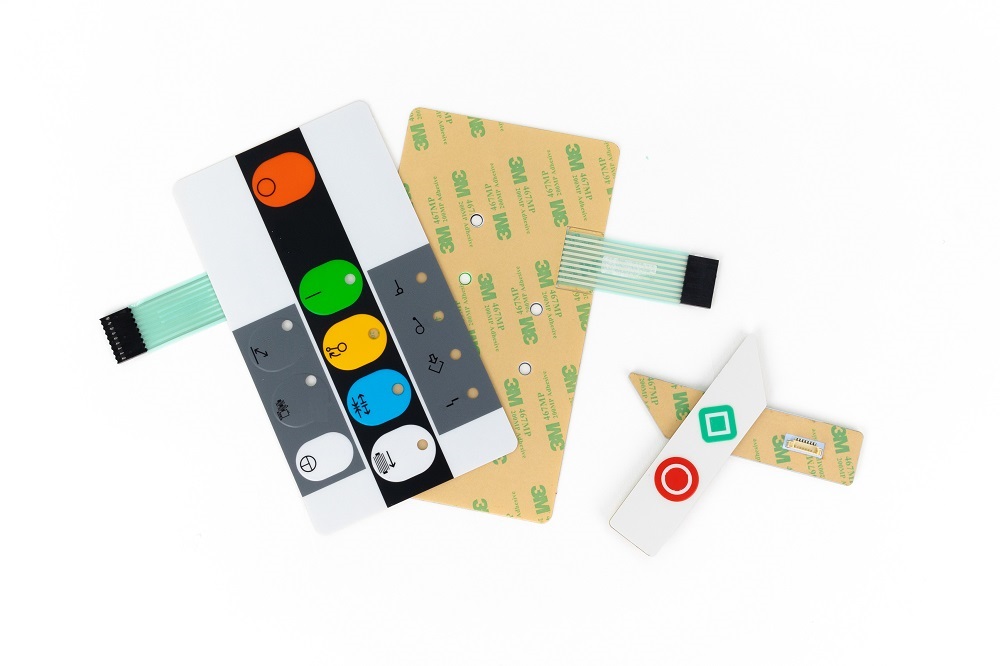How Membrane Switch Technology is Revolutionizing User Interfaces
How Membrane Switch Technology is Revolutionizing User Interfaces
Blog Article
Comprehending Membrane Layer Switches Over: The Secret to Durable and Trusted Controls

What Are Membrane Switches?
Membrane layer buttons are an advanced service in the world of interface modern technology, combining capability and layout perfectly. These tools offer as an interface between users and digital systems, incorporating numerous components into a compact style. Usually created from versatile, slim layers of materials, membrane layer buttons are created to react to touch, making it possible for customers to communicate with equipment and digital devices effectively.
The key elements of a membrane switch consist of a published circuit layer, visuals overlay, and a spacer layer that prevents unintended activation. The visuals overlay can be customized to mirror brand identification or user preferences, boosting visual appeals while making certain usability. Membrane layer switches are commonly utilized in various applications, including medical devices, consumer electronic devices, and industrial devices, owing to their sturdiness and resistance to ecological elements such as moisture and dirt.
Among the key advantages of membrane layer buttons is their capacity to hold up against wear and tear, making them excellent for high-traffic atmospheres. Furthermore, they are light-weight and call for marginal room, permitting ingenious layouts in product growth. In general, membrane changes stand for a effective and practical option for contemporary digital interfaces, marrying modern technology with user-centric layout concepts.
Just How Membrane Layer Changes Work
The procedure of membrane layer switches over hinges on a straightforward yet reliable mechanism that converts individual input right into electronic signals. When a user presses the button, the top layer warps, enabling a conductive element in the circuit layer to make call with a corresponding conductive pad on the bottom of the visuals overlay.
The style of membrane layer switches can differ, yet they commonly incorporate domes or tactile aspects to supply responses to the customer, boosting the general experience - membrane switch. The products used in membrane switches, such as polyester or polycarbonate, add to their longevity and resistance to ecological factors, including wetness and dust. Additionally, the printed circuits are typically encapsulated, which protects them from deterioration in time.
Advantages of Membrane Switches

Additionally, membrane layer switches are recognized for their durability. Built from durable products, they are immune to dirt, wetness, and physical wear, which significantly expands their lifespan compared to standard mechanical buttons. This longevity makes them particularly appropriate for high-traffic atmospheres and their website applications needing long life.
An additional substantial benefit is the simplicity of cleansing and maintenance. The smooth surface of membrane switches over decreases dust build-up and is often impervious to spills, making them ideal for settings that call for regular sanitization.
Additionally, membrane layer switches use a structured profile, bring about a thinner style that can be incorporated right into numerous devices without adding mass. This attribute not only improves the visual appeal however also adds to an extra ergonomic product layout.
Applications of Membrane Layer Switches
User-friendly and flexible, membrane switches discover applications throughout a large range of industries, including medical tools, consumer electronic devices, and industrial devices. In the medical area, these buttons are indispensable to tools such as diagnostic devices, client surveillance systems, and infusion pumps, where integrity and simplicity of cleaning are critical. Their capability to preserve and stand up to severe settings functionality makes them excellent for such applications.

In customer electronics, membrane switches are utilized in products like microwaves, cleaning makers, and remotes - membrane switch. Their streamlined design enables for intuitive user interfaces, enhancing the general customer experience while providing toughness and resistance to tear and wear
Commercial tools additionally benefits from membrane buttons, particularly in control panels for equipment and automation systems. These switches supply security versus dust and dampness, making certain regular efficiency in tough atmospheres. Their customizable attributes enable suppliers to customize them to specific operational needs, enhancing efficiency and performance.
Selecting the Right Membrane Layer Switch
When choosing a membrane switch, it is necessary to consider different elements that influence efficiency and suitability for particular applications. The main factors to consider include ecological conditions, tactile feedback, sturdiness, and design specifications.
First, analyze the operating setting; buttons subjected to wetness, chemicals, or severe temperatures call for specific products to guarantee longevity and performance. Next off, review the requirement for responsive responses. Depending on customer interaction, some applications may take advantage of a responsive feedback to confirm activation, while others might like a non-tactile style for aesthetic factors.
Resilience is an additional critical factor; membrane layer buttons should be designed to withstand constant use, effects, and abrasion. Make sure the chosen switch can withstand the anticipated lifecycle, specifically in high-usage circumstances.

Conclusion
In verdict, membrane layer switches over serve as necessary elements browse around this web-site in the layout of long lasting and trustworthy control systems across different markets. The versatility of membrane changes enables for tailored options that satisfy specific functional requirements, reinforcing their value in modern-day technology.
Membrane changes represent a critical facet of contemporary user interface style, mixing performance with strength in different applications.Membrane buttons are an advanced solution in the world of user interface innovation, integrating capability and style effortlessly. Normally constructed from versatile, slim layers of products, membrane switches are designed to react to touch, allowing users to interact with machinery and electronic tools efficiently.
The style of membrane layer switches can vary, however they commonly incorporate domes or tactile components to supply feedback to the individual, boosting the overall experience.In conclusion, membrane switches over offer as essential components in the layout of dependable and durable control systems throughout various industries.
Report this page